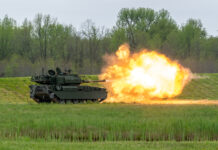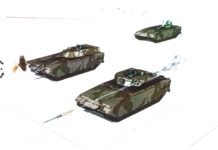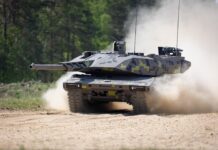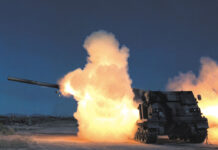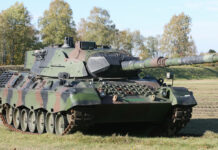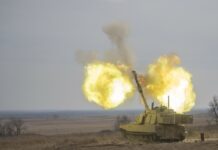At first blush, Russian tank casualties in the ongoing war indicate a weakness in Russian vehicle protection. The truth, however, maybe more nuanced.
The statistics are damning. Since Russia’s invasion of Ukraine on 24 February 2022, the country’s armed forces have lost 1,450 Main Battle Tanks (MBTs), according to the Oryx Blog, which stated that of this total circa 900 have been damaged or destroyed. The International Institute of Strategic Studies (IISS) calculates that Russia possesses around 3,300 MBTs. These are distributed across its army, naval infantry and airborne forces. A loss rate of 900 MBTs represents 27% of the fleet over ten months up to December 2022. If losses continue at this rate, Russia will lose all her tanks by late March 2025, assuming the war continues until then and these losses are not replaced.
It may sound obvious, but tanks are vital to the Russian Army. The seminal 2016 publication of the US Army’s Foreign Military Studies Office ‘The Russian Way of War’ by Russian military experts Dr. Lester Grau and Charles Bartles underscores just how important they are. Tanks are used closely during manoeuvre with army Motorised Rifle Divisions/Brigades (MRD/Bs). Defensively, MBTs support mechanised infantry by repelling enemy attacks, and performing counter-strikes and counter-attacks. Offensively, tanks help exploit breakthrough, perform deep strikes and support engagements and battles. MBTs are organised into their own tank brigades and divisions. Each MRD/B will also have an organic tank battalion of between 30 and 41 tanks. A tank brigade comprises three tank battalions. Taking an average of 35 tanks per battalion, 26 of the army’s 95 tank battalions have been destroyed in Ukraine.
Russian MBT losses have provoked significant debate over the future of the MBT in land forces manoeuvre. It is not the intention of this article to regurgitate these discussions. Instead, we will discuss what these losses mean for Russian MBT Active Protection Systems (APSs). Specifically, we will analyse those Russian APSs relying on radar, and how these maybe defeated.
Drozd and Arena
The Soviet Union (USSR) was an early adopter of APSs for its tanks and armoured vehicles, says a source highly familiar with Russian armour design and its performance in the ongoing Ukraine conflict. Open sources say that although Soviet interest in APSs commenced in the 1960s, it would not be until 1983 when the USSR’s Naval Infantry fielded the first such system known as the 1030M Drozd. This adorned the T-55AD main battle tank relying on a hard kill system to destroy incoming rounds. Incoming rounds threatening the tank were detected at ranges over 150 m (492 ft). Once the round was detected, a grenade armed with a 107 mm high explosive fragmentation (HE-FRAG) munition was launched. This would explode 6.6 m (21.7 ft) from the tank. The grenade would either destroy the incoming round or the explosion would knock it off course. Drozd was sufficient to engage missiles or rockets travelling at 700 m/s (2,519 km/h). Russian sources note that two Drozd variants were produced; the baseline version equipping MBTs and the later, more refined Drozd-2 modular variant, which could be fitted to both MBTs and other armoured vehicles.
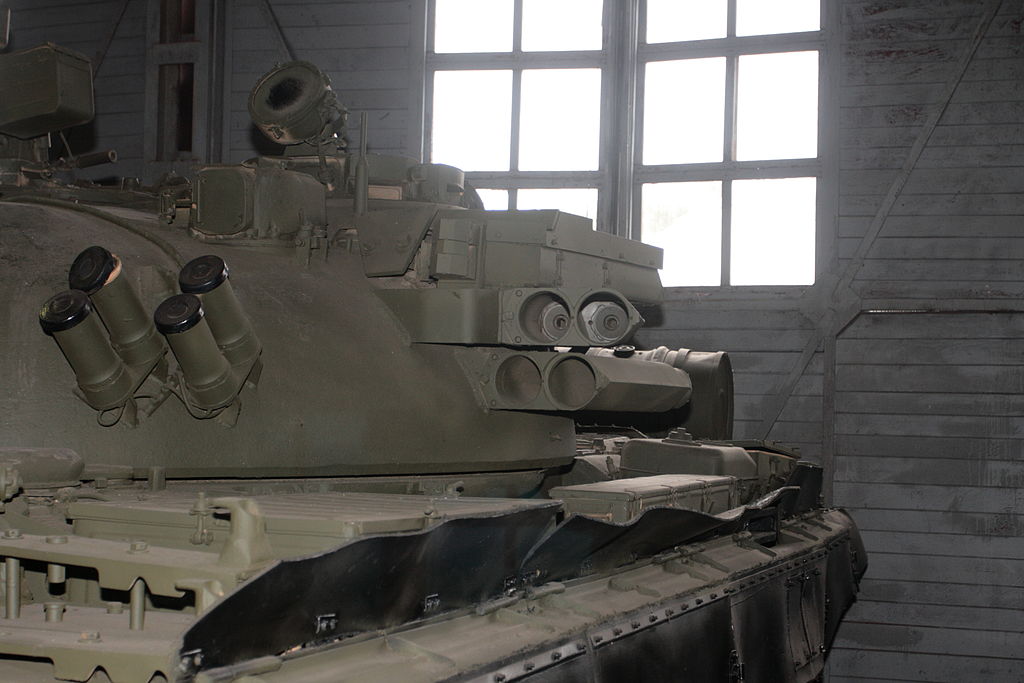
The sensory component of the Drozd was a K-band radar transmitting in frequencies of 24.5 GHz. As observed in an article by armoured vehicles expert Richard M. Ogorkiewicz, Russian engineers pioneered the use of radar to support APSs. The choice of K-band was interesting. On the one hand, K-band transmits very short signal wavelengths of 10 mm. Wavelength is the measurements of the distance between two peaks and two troughs in a radio signal. These short wavelengths are very useful for precisely detecting and tracking small targets like incoming missiles or rockets. This was imperative to ensuring Drozd would select whichever of the system’s four launchers was in most favourably angled toward the threat.
On the other hand, while K-band is a good choice for capabilities needing this level of precision it has a disadvantage. Radars transmitting such short wavelengths are prone to a phenomenon known as rain fade. This is where precipitation like rain or snow in the atmosphere causes interference or ‘clutter’ in the radar, potentially hampering its ability to detect and track a target. To further complicate matters, the ordnance earmarked to be engaged by Drozd had a low Radar Cross Section (RCS). For example, a mortar shell has an RCS of circa 10 mm2, which would be comparable to some of anti-tank weapons Drozd was intended to protect against. During inclement weather the K-band radar will be looking for a small target hidden in clutter. Not the easiest task at the best of times.
Open sources note that one approach taken by Soviet engineers was to include filters in the radar to discount everything but targets flying within the speed thresholds associated with anti-tank ordnance. An article by Captain Tom J. Meyer in the May-June 1998 edition of the US Army’s Armor magazine noted another radar shortcoming. It could not accurately determine the elevation of the incoming round. Nonetheless, Drozd did boast an 80% success rate against ordnance during the Soviet war in Afghanistan between 1979 and 1989. The source familiar with Russian armour in Ukraine revealed that at least one T-80UM2 equipped with Drozd was destroyed in the conflict. However, they emphasised that Drozd and other Russian APSs have not been widely deployed in the war so far.
RF detection was revisited for the Arena system which debuted in the mid-1990s. The system was built around an omnidirectional radar continually scanning for incoming threats to the tank. Like the Drozd, this too used a K-band radar, most probably transmitting on similar wavebands. The radar detects its target at between 7.8 m (25.6ft) and 10 m metres (32.8ft) from the tank. Arena’s computer then selects the appropriate launcher for the threat and launches a directional HE-FRAG projectile upwards which, after a brief delay to gain, then detonates, directing its spray of fragments into the path of the round. The protection system typically engages the threat at ranges of between 1.3 m (4.3 ft) and 3.9 m (12.8 ft) from the vehicle. Notably, Arena and the more modern Arena-M variant do not appear to have been deployed operationally. “They never really entered service,” said the source. Pictures have been seen in the public domain of the equipment being trialled for the purposes of upgrading T-72B3 and T-90M tanks, but they have yet to progress beyond this. Nonetheless, Russian reports in September 2022 stated that T-90M, T-80BVM, and T-72B3M tanks should begin receiving the Arena-M from 2025. Whether this occurs remains to be seen.
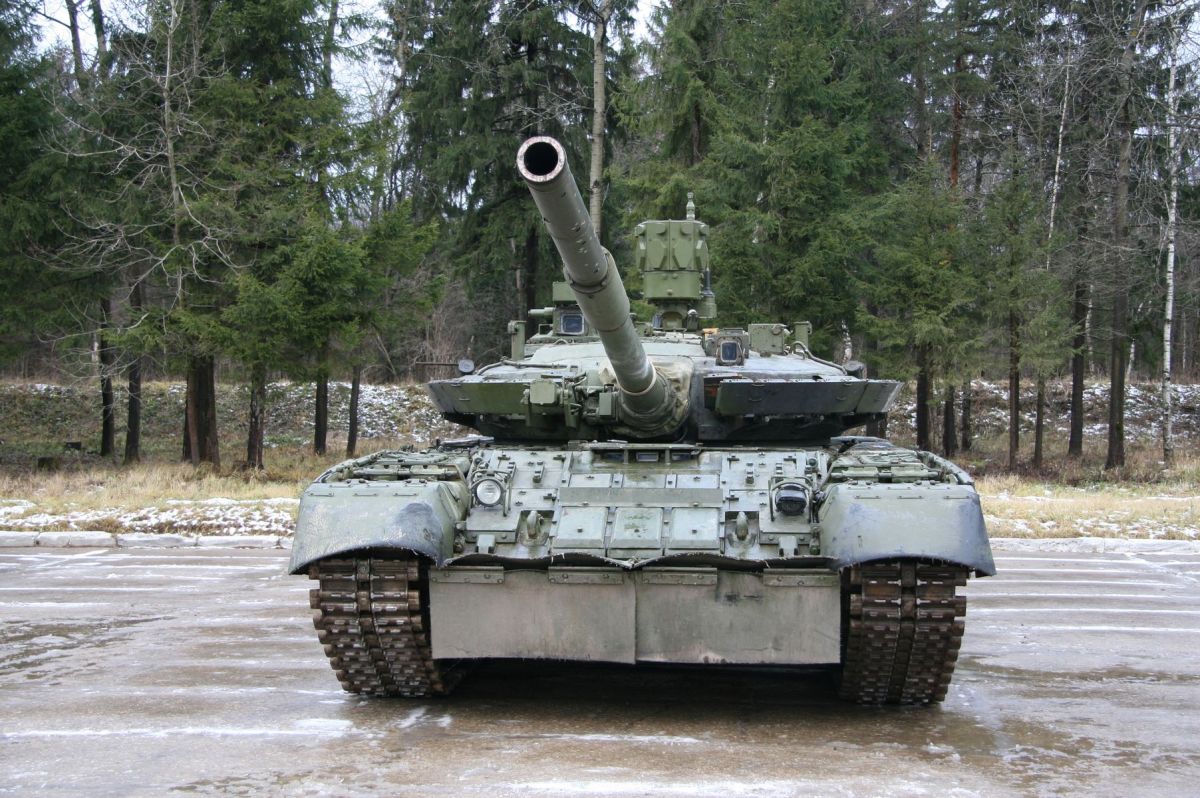
Afghanit
Afghanit is the latest APS developed for the Russian armed forces, but has not entered service. Radar is once again being used for the detection of the incoming rounds. Open sources say that Afghanit can intercept rounds at a range of 20 m (65.6 ft) from the vehicle. Nonetheless, the reliance on radar for systems like Afghanit and Arena-M is a potential weakness. A 2020 paper published in the Journal of Physics on APSs warns of shortcomings. Radars are vulnerable to clutter, as noted above, and their other potential weakness is jamming. A K-band radar can potentially be attacked by a jammer emitting on similar wavebands. For example, a jammer could be used to jam the APS radar while an attack takes place. However, while not impossible, this would be risky. The narrowness of the K-band radar beam would mean the jammer would need to be in a direct line of sight with the radar antenna. Moreover, these antennas are small and the tank, and its turret where the radar is mounted, will most probably be moving. This would make it difficult to keep the jamming signal on the radar for sufficient time for the attack to take place.
Moreover, a K-band jammer will suffer the same degradations in jamming signal range and power in bad weather. Afghanit also uses an ultraviolet (UV) system to detect incoming missiles, and it is possible that these may partially compensate for the radar if operating under degraded conditions.
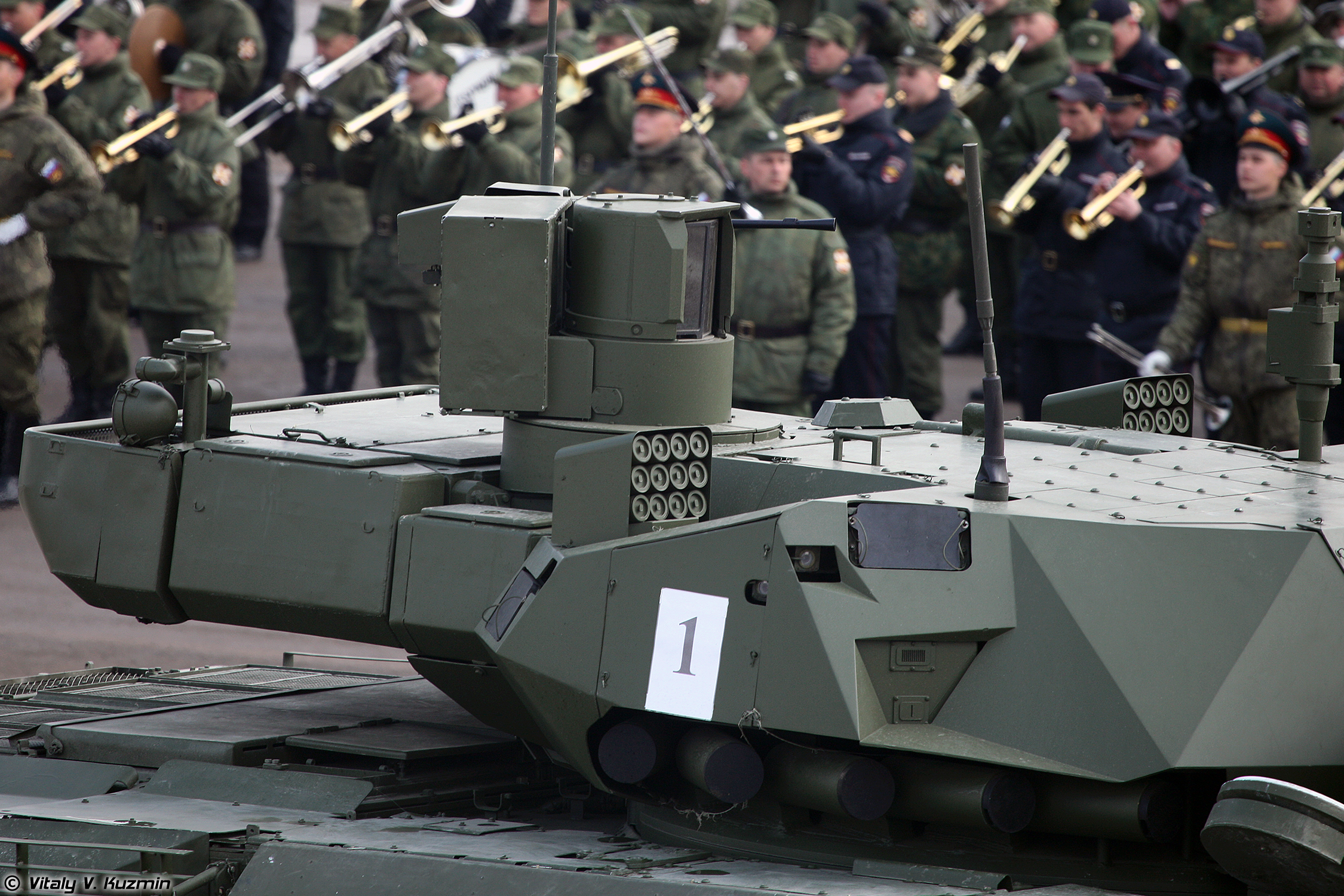
That said, UV is by no means perfect. Detection of the hot exhaust plume of an incoming missile can be obscured by smoke or obscurants. This can reduce the detection range of the UV sensor or eliminate it altogether if these obscurants are thick enough on the battlefield. Although Russian APSs may not be widely deployed in Ukraine, the Drozd-furnished T-80UM2’s destruction shows that some MBTs equipped thus may be encountered in theatre.
Vulnerabilities
Although jamming radar-equipped APSs could be difficult, it may not be impossible. Ukrainian forces may be able to use civilian technology to jam K-band radars. Some speed detection radars operate in similar wavebands, with K-band a popular choice. This is used on account of its ability to provide highly accurate detection of the target’s speed in a system easily installed at a roadside vantage point. A burgeoning trade has emerged with companies offering civilian radar detectors. These are favoured by drivers wanting to break the speed limit while avoiding the radars. Militaries use Electronic Support Measures (ESMs) to detect radio signals. However, the problem is that the ESMs used by land forces are typically optimised to detect signals across wavebands of 3 MHz to 6 GHz. This is because land forces are primarily concerned with detecting and locating hostile radios. Detecting radio emissions lets you determine where hostile troops are located by locating these signals. It may even be possible to track the movement of these forces using their radio signals alone. These Communications Intelligence (COMINT) systems may be able to demodulate and decrypt some radio signals. As a result, hostile radio traffic can then be exploited for tactically or operationally useful intelligence.
Unfortunately for land forces, many COMINT ESMs do not stretch upwards to the wavebands used by K-band radars. Could forces looking to counter the capabilities of radar-equipped APSs refashion civilian traffic radar detection systems to alert them that such a radar may be operating? One challenge of using this technology is that the detector may not give an exact indication of where the threat might be. Traffic radar detectors tend to provide a directional indication of where the radar is located. This may tell the motorist that the radar is in front or behind them. It may be possible to combine two detectors a set distance apart to triangulate where the threat is.
Civilian radar jammers may also be effective. Some motorists are not content with merely detecting where a radar might be and altering their speed accordingly. They may also want to jam the radar. Civilian radar jammers are of questionable legality in many countries. Nonetheless, a range of products including those which jam K-band signals are freely available on the internet and are relatively inexpensive to procure. Using a civilian K-band jammer to attack an APS radar may not be as straightforward as it seems. Firstly, the jammer will need to be powerful enough to reach the radar antenna and then to drown out the radar’s own signal. A rule of thumb in electronic warfare says that jamming is always directed against a radar or radio’s receiving antennas. Most radars and radios use a single antenna to transmit and receive. When a radio signal is transmitted from a radar it leaves the antenna with a certain level of power. The signal travels through the ether, hits a target and is reflected to the radar. This round trip causes the signal to expend energy, and this energy loss is further compounded by the fact that small RCS targets in particular may only reflect a portion of the total energy transmitted back to the receiver. The net result is that the radar signal is comparatively weak when it returns to the radar compared to its power level when transmitted. Having a jamming signal which is stronger than the power of the returned signal simply ‘drowns out’ the original signal amidst a cacophony of noise.
We cannot discount the possibility that these radars may have so-called electronic counter-countermeasures (ECCM) to nullify this tactic. Their software maybe designed to recognise incoming high-power signals and to ignore these. Instead, they will only accept signals at power levels the radar would expect from those reflected by a target. The radar may also rapidly and pseudo-randomly change frequencies. Once again, the software may discard signals that do not appear to follow the profile of the kind of signals the radar would expect to receive. Some of these questions could be cleared up through the sampling of signals transmitted by these radars. This would give clues on some of the countermeasure techniques that could be used to jam these APSs. As noted above, these systems are not widely deployed in Russian service, which might make recording these signals problematic.
Moreover, much like radar signals, jamming signals can also be detected and located. A risk here is that troops using a jammer against a radar might advertise their own position with potentially dangerous consequences. That notwithstanding, it will not be beyond the expertise of Ukrainian engineers and software experts to develop capabilities which could fool Russian radar-assisted APSs.
The Future
Are we likely to see the widespread adoption of APSs on Russian armour in the future? The source thinks not. “Active vehicle self-protection systems add weight,” they say. “A lot of Russian armour is pretty mobile. The Russians are unlikely to want to add the extra weight of an AVSPS which may reduce this.” Moreover, the performance of explosive reactive armour already “covers many of the threats” that would otherwise be addressed by an APS. Nonetheless, the architecture these systems currently use, particularly regarding radar, does introduce potential vulnerabilities. These vulnerabilities maybe exploitable by Ukrainian forces battling Russian armour. Moreover, this may be possible by using commercially available technology modified for military use. At a stroke what the Russian Army hope may protect its tanks could become a critical vulnerability.
Thomas Withington



